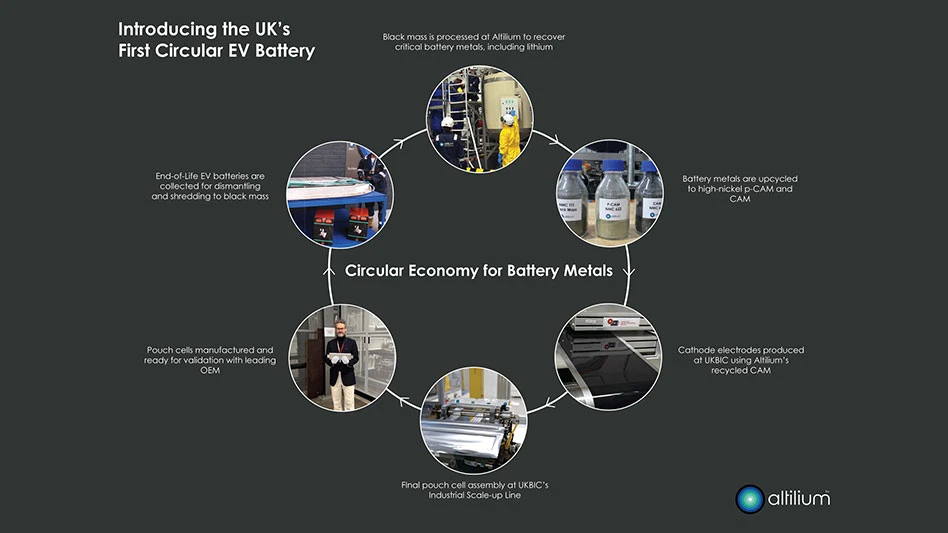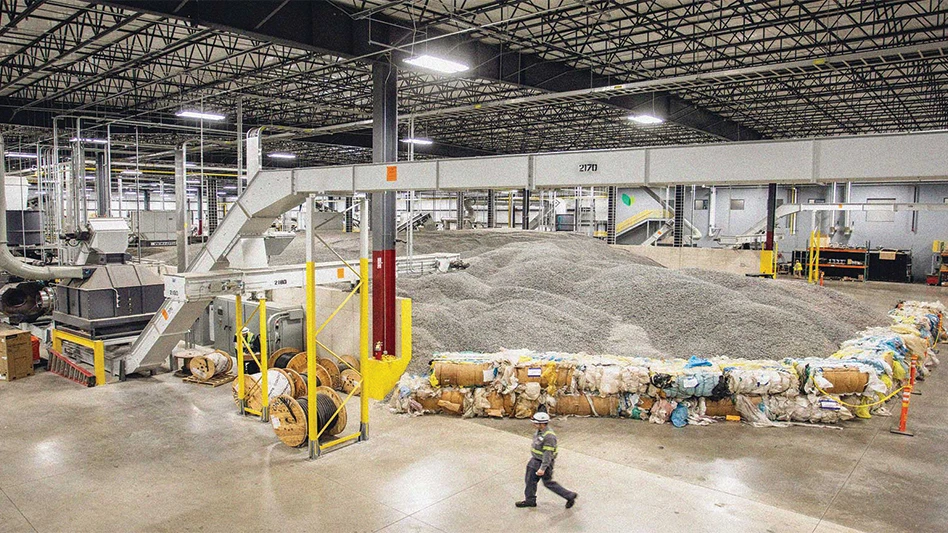Editor’s Note: This article is a partial transcript of a presentation give by Byron Luo of Ralison International Inc. at the 2008 Paper Recycling Conference.
I have been asked to address the topics of how the Chinese economy is doing, how Chinese paper companies are dealing with the rising costs of commodities and if the trend of importing so much scrap paper sustainable.
| Warehouse Woes |
|
Recyclers spent much of 2008 having to scramble for export containers, a situation very different from what had existed in the first part of the decade. Those in the logistics and shipping business also had to deal with a lack of warehouse space at and near ocean ports. "It’s been a rough couple of months," said Mario Bruendel of Fr. Meyers Sohn, Newport Beach, Calif., who spoke at the 2008 Paper Recycling Conference in late June. "Due to the shortage of [containers] in them, warehouses are being used more and more on the major ports of the East and West coasts," said Bruendel. "Warehouses are at full capacity right now." The 2008 Paper Recycling Conference, held June 22-24 in Chicago, was organized by Recycling Today Media Group. — Brian Taylor |
There are also some challenges, however. Inflation is fairly high at 8.3 percent currently. Some analysts and forecasters that I talked to said inflation in China may decrease to 5 or 6 percent by the year’s end. With the way things are right now, I think that’s a very optimistic forecast.
Actual capital investment is growing in China, but at a much slower rate. That’s largely because of the Chinese government’s intention to slow such economic activities in order to keep the economy in balance. Additionally, exports, of course, have dropped significantly, and the domestic market is growing, largely to offset the negative effects of the slower Chinese economy and the slowdown in exports.
COSTS OF DOING BUSINESS
There are a number of cost statistics from Chinese economists that, though they are not directly related to the paper industry, are important for the economy as a whole. Commodity costs have been going up significantly, which makes me think this run of inflation is cost-driven. It’s very different from the past two major inflation happenings in China. Major cost increases include iron ore, up by 79.96 percent; soybeans, up by 77.28 percent; crude oil, up by 64.69 percent; gasoline, up by 63.64 percent; and steel, up by 34.61 percent. The result has been an inflation rate that has risen from 2.8 percent to 8.2 percent in 12 months—it’s very significant.
In February my co-workers and friends in China were telling me they were feeling the pain. It’s very difficult for them to manage these escalating costs, especially for food, which has gone up significantly.
For industrial companies the Producer Price Index (PPI) is increasing sharply, rising from between 100 and 104 in early 2007 to between 106 and 109 by 2008. But there’s a slight difference that I want to point out. The consumer goods PPI is a little softer compared to the industrial PPI, which illustrates that a lot of consumer products makers find it harder to pass higher costs on to the final consumer.
Wages are increasing significantly because the government has enacted a new minimum wage law, which is good. Employers need to increase wages because the labor force is no longer as sufficient as it was in the past. I’ve heard that many local companies are experiencing labor shortages. They have to do more advertising and make more of an effort to attract workers.
ON PAPER
|
Fueling Inflation |
|
Operators of large oceangoing container ships are among those who watched the rising cost of oil change the way their industry works. According to Scott Krohn of OOCL USA Inc., Rosemont, Ill., who spoke at the Paper Recycling Conference in late June, "At one time our vessel voyage costs were about 11 to 12 percent of the overall [shipping cost]. Today it’s about 20 to 22 percent." He continued, "If you take a 6,000 TEU ship (a vessel that would hold 6,000 20-foot containers), it used to cost about $33,000 per day three years ago to run that 6,000 TEU ship. Now it costs about $110,000 per day to run that 6,000 TEU ship." The cost of bunker fuel, the petroleum blend used by large ships, increased steadily throughout 2007 and in the first half of 2008. The 2008 Paper Recycling Conference, held June 22-24 in Chicago, was organized by the Recycling Today Media Group. — Brian Taylor |
On the other hand, the Chinese savings rate has been very good on a national level. Even with the large amount of investment in infrastructure, the current household savings rate is still high at 1.9 to 7.3 percent of the GDP in the last 10 years. That, I think, has allowed for the accumulation of enough of a buffer or cushion for the economy in an economic slowdown.
As to the connection to the paper industry in China, in a developing country, 10 percent GDP growth can translate to 7 to 10 percent growth for the paper industry. I think that is especially true for the light board industry. Manufacturers are moving and shipping their products, so they need packaging materials. However, the profit margin is being squeezed.
Next, let’s take a look at import and export. I think everybody is familiar with the import/export situation, but I’d like to give you some numbers.
Beginning around 2002, the spread between import and export was fairly big. As of April 2008, the gap was smaller.
Import and export with the United States has become fairly balanced. Again, the mortgage crisis in the U.S. was blamed for the decline in exports from China.
I’m sure the Chinese economy would find it convenient to blame someone else, but it’s true that the Chinese economy has depended on exports for almost three decades. But it’s starting to change into a more domestically traded economy.
However, Chinese exports to Russia, Brazil and Southeast Asia have been stronger, providing some relief to the export-dependent manufacturers.
As far as the paper business, [container availability] is very tight, and there is still pressure for freight rate increases.
How is the paper industry coping with rising commodity costs? The growth in consumption and production has been balanced.
Regarding the cost structure of a paper mill, raw material accounts for 67 percent, energy for 12.5 percent, labor for 1.5 percent, depreciation for 7 percent and chemicals make up 12 percent.
Looking at 10 publicly traded paper companies, from 2005 to 2007 profitability went going down. But from 2007 to April of 2008, it is going up slightly. Gross profitability is stable despite rising costs, and there has been a slight upward trend recently. Paper mills have successfully absorbed the pressures of rising costs.
They have done this, I believe, by improving productivity and increasing the finished product price. So far, so good. But the big question is, what is going to happen next?
My information is that in the first quarter the price has gone up by about 10 percent. Many people believe this was a short-term surge in light of the Olympics and the post-earthquake recovery, which caused a short-term rise in demand. Plant capacity increases will make it fairly hard to have further price increases, however.
China’s board mills have been adding a lot of new capacity this year. I think this move will create a short-term oversupply, but because the Chinese economy is still an export-oriented economy, the long-term prospects are good.
NEXT STEPS
In China, the paper industry appears to be consolidating. Smaller mills are being closed for environmental and efficiency reasons. They cannot compete with the newer and better machines.
Also the Chinese National Development Reform Council exerts control over investment. It has to approve large-scale investment and encourages consolidation and the creation of conglomerates.
According to the council, by 2010, the country will add 26.5 million metric tons of mill capacity. At the same time, 6.5 million metric tons of capacity will be closed. The smaller mills will be closed. Total capacity will reach 90 million metric tons, and the consumption total will reach 85 million metric tons.
Again, regarding the market, the demand for paper will be in line with GDP growth. Assuming it will be around 10 percent, the industry’s growth prospect is very good. Import and export play a role, but import and export have become [closer to] balanced. They cancel each other, pretty much. Domestic Chinese supply and demand will be balanced.
Demand for paper and paperboard is growing. Government policy encourages mills near Shanghai and Guangzhou to access scrap paper via ship.
At the same time, the Chinese economy is going to remain a net exporter of consumer goods. Paper packaging products will leave China, so China will continue to be a net importer of scrap paper.
Recycled paper accounts for 56 percent of pulp consumed in China, and 26 percent of it was from overseas recycled paper. That percentage is expected to remain stable. This translates into growth.
Based on 90 million metric tons of total capacity, demand for scrap paper from overseas will not grow in absolute correlation with the capacity increase, but will increase at the same percentage.
Byron Luo is vice president of purchasing for Ralison International, Diamond Bar, Calif., the buying agent for China’s Lee & Man Paper. He can be reached at byron
luo@ralison.net.

Explore the October 2008 Issue
Check out more from this issue and find your next story to read.
Latest from Recycling Today
- Returpack reports increased DRS activity in Sweden
- Trade groups align against European export restrictions
- Construction, auto sectors show mixed signals
- Politics in Turkey threaten recycled steel outlet
- Toppoint Holdings expands chassis fleet
- Lego creates miniature tire recycling market
- Lux Research webinar examines chemical recycling timetables
- Plastics producer tracks pulse of wire recycling market





